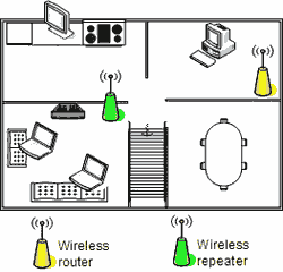|
Troubleshooting Strategy
How do you know when you are having a network problem? The answer to this question depends on your site's network configuration
and on your network's normal behavior. See "Knowing Your Network" for more information.
If you notice changes on your network, ask the following questions:
* Is the change expected or unusual?
* Has this event ever occurred before?
* Does the change involve a device or network path for which you already have a backup solution in place?
* Does the change interfere with vital network operations?
* Does the change affect one or many devices or network paths?
After you have an idea of how the change is affecting your network, you can categorize it as critical or noncritical. Both
of these categories need resolution (except for changes that are one-time occurrences); the difference between the categories
is the time that you have to fix the problem.
By using a strategy for network troubleshooting, you can approach a problem methodically and resolve it with minimal disruption
to network users. It is also important to have an accurate and detailed map of your current network environment. Beyond that,
a good approach to problem resolution is:
* Recognizing Symptoms
* Understanding the Problem
* Identifying and Testing the Cause of the Problem
* Solving the Problem

Antenna tips and tricks
Antenna selection has a tremendous impact on the range of your wireless network. Here a few things I've learned:
* The design of every external card puts the antenna in the worst possible orientation: sideways, and very close to the
laptop (or desktop). The radiation pattern is almost straight up and down! You can watch the wonders of RF (radio frequency)
by opening up your strength meter (wmwave for Linux is very good for this) and tilting your laptop sideways. Watch that signal
bar grow. Go for the green! Learn to type sideways!
* The one notable exception to this is the Apple built-in AirPort card. They've thought enough to include an internal
antenna connector that runs up the LCD panel. This is an excellent design with much better range. It looks like IBM is the
first to play copycat (as usual) with their "i Series" ThinkPads.
* You will see tremendous differences in signal strength by attaching a small omnidirectional external antenna, and orienting
it properly. Which way is properly? That depends on your environment. Try every possible position (with your signal strength
meter open). I've put mine on top of my monitor, below the desk, sideways, on the table behind me, slung over my shoulder,
etc.
* Make sure your card can take an external antenna. Many low-priced cards don't include external connectors anymore. You
will have trouble finding a connector to fit the ones that do. Word has it that part of the FCC rules require "proprietary"
external antenna connectors on all 2.4-GHz equipment. Check out your friendly local radio supplier for proprietary-to-standard
adapters.
* Higher is not always better for large external antennae. Most people immediately think of putting an antenna on their
roof, without considering where their traffic is coming from. Look at the radiation projection of various antennae, and try
to get the best parts pointed in the direction you are most likely to be coming from. Usually, the worst place to be in relation
to an omnidirectional antenna is directly beneath it!
Be sfae out there, Bobbie H.
|

